Changing Horses In Mid-Stream, or, Tool Cabinet Parquetry Diamonds By The Dozens

My original full-sized design sketch.
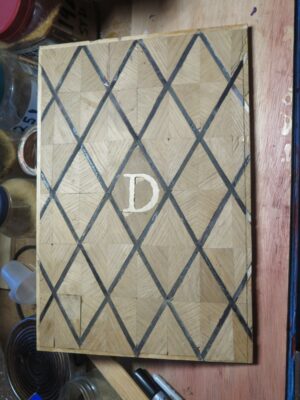
My proof-of-concept panel with the parquetry pattern at full scale. Rendering this was an extremely instructive and useful exercise that changed my approach to every step of the process.
In prepping for the tool cabinet parquetry mock-up — that is as exact as I can make it rather than my previous proof-of-concept — plus the actual parquetry on the cabinet, I was going to need dozens if not hundreds of the diamond units. A task that large is similar to eating an ox. You do it one bite at a time.
Here’s that first bite.
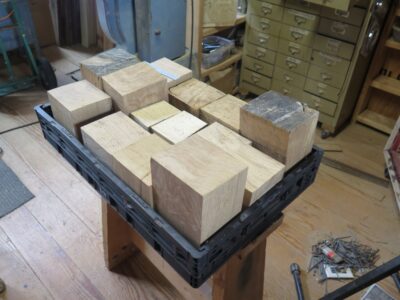
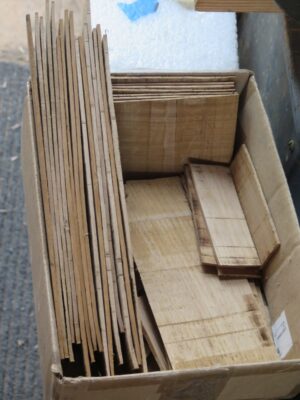
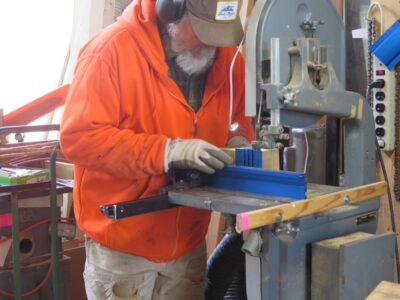
My starting point was cutting hundreds of 30-60-90 triangles both with the grain and across the grain. My veneers were all white oak cut from leftover scraps from the French Oak Roubo Project, and man was it dense. I tried cutting the triangles using jigs and handsaws (that is how I teach introductory parquetry workshops like the upcoming one at Wood and Shop near Charlottesville VA), but soon came to the realization that this ox needed a little prodding.
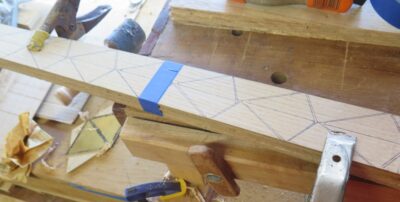
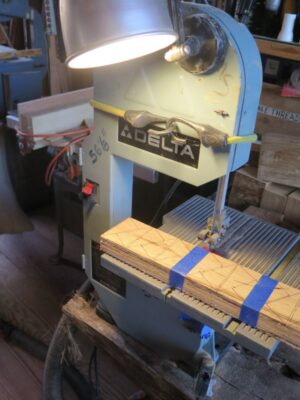
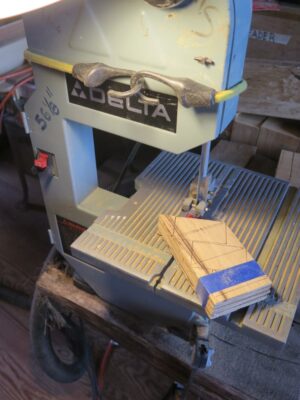
Given my recent success using my Delta benchtop bandsaw with a fine blade, combined with a new strategy for working the parquetry, I decided to do all the sawing on that little machine.
Soon enough I had two plastic shoebox-sized tubs each filled with hundreds of the slightly oversized triangles I needed for what would come next.
Changed horse #1.
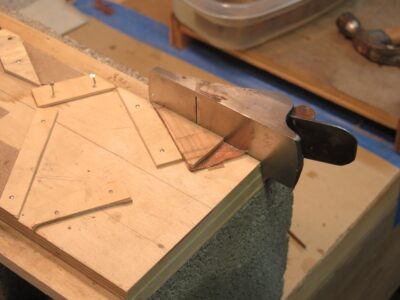
Even though I wasn’t sawing the triangles by hand I was determined to edge plane each one using precise shooting jigs fabricated especially for that purpose. A few dozen of those, especially the ones that are primarily cross-grain, and that determination flagged. I needed a different system if I was to get the ox eaten. That “new system” will be the focus of my next post on the project.
Changed horse #2.
In addition, once I first established the size of the parquetry pattern I created a brass template to make each diamond the perfect size and fit. I was so intent I used trigonometry calculations and a vernier caliper to get the dimensions and angles really precise. (If you ever wondered when you would use what you learned in 11th grade Trig class, now you know.) The frustration of this fussiness soon depleted my enthusiasm for this approach. The alternative I devised will be demonstrated in a post a way down the road.
Changed horse #3.
Stay tuned for “what would come next.”
PS Posting might continue to be sorta sketchy for another little while as grandson #3’s arrival is imminent, and grandsons #1 and #2 have birthdays right on the heels of #3’s introduction to his share of the national debt.


Join the Conversation!